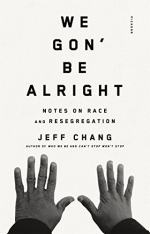|
This section contains 752 words (approx. 2 pages at 400 words per page) |

|
Summary
In the early 2000s, the landscape of San Francisco changed as the rise of Silicon Valley contributed to gentrification, income disparity, and demographic changes that disproportionately benefited white people and disenfranchised people of color. The same pattern of gentrification and racial income disparity is mirrored in cities across the country which are becoming increasingly resegregated. Cities are becoming wealthier and white while aging suburbs are becoming "poorer and darker" (72). Segregation is linked to racial disparities partly because where one lives is tied to everything from the quality of education available to the kind of health care one receives and more.
Chang uses Ferguson and St. Louis as an example of former "sundown town" that has now become a majority Black area due to gentrification and resegregation. Earlier in the 20th century, government policies supported white mobility and...
(read more from the Vanilla Cities and their Chocolate Suburbs: On Resegregation Summary)
|
This section contains 752 words (approx. 2 pages at 400 words per page) |

|




